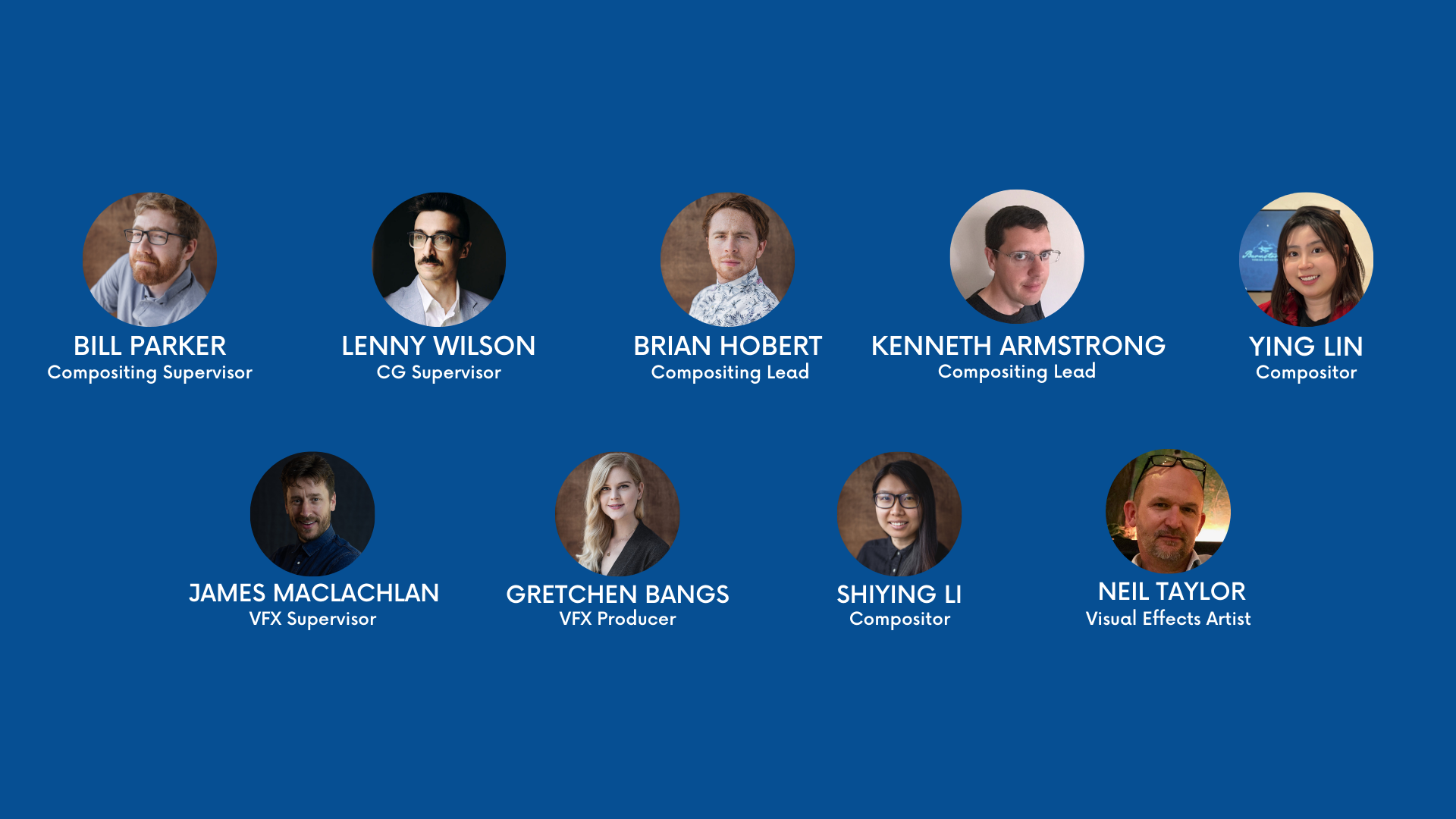The team at Barnstorm VFX is currently Emmy nominated — Outstanding Special Visual Effects In A Single Episode — for their work on Apple TV+’s Ted Lasso "Mom City.”
We caught up with Lawson Deming, Co-Founder/CCO/Executive VFX Supervisor, to chat about the role of invisible effects on the series, how their compositors used Mocha Pro to planar track and roto, and the value of a generalist mindset.
Five members of the Barnstorm team are currently nominated for your work on Ted Lasso. How does it feel to be nominated?
We’ve been very proud of our work on Ted Lasso since the very first season of the show, and each year, we feel the visual effects are getting better and better as the scope of the soccer/football scenes expands. It’s a great feeling to get awards recognition, especially because people have a chance to see just how much of the stadium work is visual effects.
(Editor's note: Congrats to Bill Parker, Compositing Supervisor; Lenny Wilson, CG Supervisor; Brian Hobert, Compositing Lead; Kenneth Armstrong, Compositing Lead, and Ying Lin, Compositor, on their nominations!)
 Barnstorm VFX: Ted Lasso, Season 3 team
Barnstorm VFX: Ted Lasso, Season 3 team
Viewers might not necessarily think of Ted Lasso as a VFX-heavy series. What type of invisible effects did you handle over the course of the season?
The most prominent effects are obviously the stadiums and crowds. We’ve been surprised how many people didn’t realize these were done with visual effects, but it’s a testament to the quality of the work and the way it’s integrated into the show. For the most part all the stadiums are CG, and the crowds are practically captured performers run through various reactions and arrayed using a crowd system we developed for Nuke.
We add digital LED hoarding with advertisements and such on it. Even the ball is sometimes digital. The only real things in most shots are the players on the field, and they’re shot on an open practice field so there is extensive roto and comp, rendered more challenging when low angles place them against a bright sky. Every game is a narrative, so the crowds need to react fairly specifically to the action on the field. They aren’t just flatly cheering at nothing. We went to great lengths to get performances that cover all the moments that happen in a game, and we can queue them up using our system so that the home team can cheer, for example, while the visitors boo.
This season, we really stepped it up by doing 3D captures of individual crowd members using volume scanning. The intent here wasn’t to create posed animatable digital doubles but instead to record the performances of the real people in 3D. It’s the best of both worlds because we get real movement and emotion, but unlike sprites, these recordings can be repositioned and re-lit to better match their environment.
Barnstorm VFX, Ted Lasso Season 3, Stadium and Crowd VFX
Your compositors rely on Mocha Pro together with Nuke in their daily workflows. Can you give some examples of how it was used on the series?
As you might expect, there is a lot of roto and tracking necessary in a show with so many characters moving around in action/sports scenes: many shots per episode. But while our tracking and matchmove vendors are very skilled, there’s no way to anticipate everything until a shot is in a compositor’s hands. Sometimes, you can kick back a shot to get some cleanup done at this point, but sometimes tight deadlines mean that the compositors themselves need to augment tracks or paint work just to get a shot over the finish line. Things like hair can be particularly tricky because characters filmed against a bright sky backdrop need to be placed against a darker stadium and crowd, so our compositors have a bag of tricks they can use to try and solve problems on their end.
We’ve been using Mocha Pro for a number of years at this point, and many of our artists are good at using it for quick fixes, either to create some additional masks or to freeze a bit of a character and planar track them back in to patch up a gap. Anything that allows the artists to do final shots on their own and not need to kick stuff back up the chain saves us time.
Why is it important for your compositors to have access to Boris FX products?
At Barnstorm VFX, we’re strong believers in a generalist mindset. Having specialization is great, but being too narrow in your skillset makes it harder to get things done quickly, and it’s harder for departments to communicate with each other if the people in them don’t understand how the other is working. For this reason, we expect compositors to have an understanding of planar tracking and to be able to track and roto small things in a pinch. Tools like Mocha Pro are very approachable for compositors and make it easy for them to be more self-sufficient, and it’s a tool in the toolbelt that can be used in really creative ways as well to solve problems.
You mentioned having to outsource certain parts of tracking and roto work. Did your vendors also rely on Boris FX products?
We outsource rotoscoping and also some of our 3D tracking. Our vendors use Silhouette for roto, and we are able to QC it internally or even tweak it slightly if they send us their project files.
Learn more about Mocha Pro and download the Boris FX Hub for a free trial.
Watch Ted Lasso on Apple TV+.